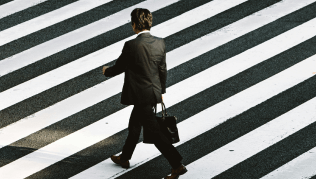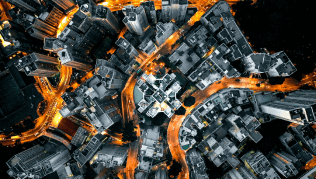Photography, much like other forms of art and communication, has seen countless innovators who have pushed boundaries and redefined visual storytelling. Among these trailblazers are women photographers who have not only captured remarkable images but also shattered gender norms, opened doors for future generations, and shaped the industry. These pioneers, many of whom started during times when women’s contributions to art were often marginalized, left an indelible mark on the world of photography.
In this article, we celebrate some of the key women photographers throughout history who have had a lasting impact on the field. Their stories highlight the immense creativity, resilience, and vision of women who transformed photography into a platform for artistic expression, social commentary, and cultural reflection.
Table of Contents
The Early Pioneers of Women in Photography
In the 19th century, photography was still in its infancy, and the industry was dominated by men. Despite this, a number of pioneering women photographers emerged, challenging the conventions of their time.
1. Julia Margaret Cameron (1815-1879)
One of the earliest and most influential women in photography, Julia Margaret Cameron is renowned for her soft-focus, intimate portraits. A British photographer, Cameron took up photography at the age of 48, and her work centered on capturing the beauty and emotions of her subjects, often featuring friends, family members, and influential figures such as Charles Darwin and Alfred Lord Tennyson.
Cameron’s ethereal portraits, marked by intentional blurring and dramatic lighting, were revolutionary during her time. Though her techniques were initially criticized for not adhering to the sharp focus that was standard at the time, Cameron is now celebrated for her artistic vision and her ability to evoke deep emotion through her images. Her work laid the foundation for modern portrait photography, influencing generations of photographers.
2. Anna Atkins (1799-1871)
Considered the first woman to create a photograph, Anna Atkins holds a significant place in photography’s history. Atkins was a botanist who used photography to document plant specimens. Her book, Photographs of British Algae: Cyanotype Impressions, published in 1843, is recognized as the first book illustrated with photographic images.
Atkins used the cyanotype process, a photographic printing technique that produces blue-toned images, to capture delicate and detailed impressions of plants. Her pioneering use of photography as a scientific tool showcased the medium’s potential for both artistic and educational purposes, marking an important milestone in the early development of photography.
The Documentary Visionaries
In the 20th century, as photography became more accessible, women photographers began to play crucial roles in documenting historical events, social issues, and everyday life. Their work not only reflected the changing world around them but also contributed to shaping public consciousness.
3. Dorothea Lange (1895-1965)
A leading figure in documentary photography, Dorothea Lange is best known for her powerful images of the Great Depression in the United States. Working for the Farm Security Administration (FSA) during the 1930s, Lange traveled across the country to capture the struggles of displaced farmers, migrant workers, and poverty-stricken families.
Her iconic photograph Migrant Mother, taken in 1936, became a symbol of the suffering endured during the Great Depression. Lange’s work not only documented historical events but also influenced social policy by raising awareness of the plight of the poor. Her compassionate and humanizing approach to documentary photography remains influential in shaping the way photographers approach social issues today.
4. Margaret Bourke-White (1904-1971)
Margaret Bourke-White was a trailblazer in photojournalism, breaking many barriers for women in the field. She was the first female war correspondent and the first woman to have her photograph featured on the cover of Life magazine. Bourke-White documented significant events of the 20th century, including World War II, the Korean War, and the liberation of concentration camps.
Her work as a photojournalist took her to some of the most dangerous and politically charged environments of her time. She was known for her fearless approach and her ability to capture striking, emotionally charged images. Bourke-White’s work not only advanced the role of women in photojournalism but also set new standards for visual storytelling in the news media.
Artists Who Transformed Visual Storytelling
Photography also became a powerful medium for artistic expression, and many women photographers expanded the boundaries of the medium to explore themes of identity, culture, and personal experience.
5. Diane Arbus (1923-1971)
Diane Arbus is widely regarded as one of the most significant photographers of the 20th century, known for her raw, often unsettling portraits of people living on the fringes of society. Arbus challenged conventional beauty norms by capturing individuals who were often marginalized or ignored—circus performers, transgender individuals, people with disabilities, and others who lived unconventional lives.
Her work broke away from traditional portraiture, presenting her subjects in stark, unflinching detail. Arbus’s ability to capture the essence of her subjects without sensationalism made her images deeply impactful and thought-provoking. Her work continues to influence contemporary photographers who explore themes of identity and representation.
6. Cindy Sherman (1954-present)
One of the most famous contemporary photographers, Cindy Sherman revolutionized the concept of self-portraiture with her exploration of identity and the portrayal of women in media and culture. Sherman’s groundbreaking series Untitled Film Stills (1977-1980) featured herself in various roles and personas, mimicking stereotypical representations of women in Hollywood films, advertising, and art history.
Sherman’s work critiques the way women are objectified and categorized in visual culture, and her photographs invite viewers to question the authenticity of the images they consume. By turning the camera on herself, Sherman has become one of the most influential artists working at the intersection of photography, performance, and feminism.
Pioneers in Modern Photography
Today, women continue to play a pivotal role in shaping photography as an art form and as a tool for social change. Many contemporary women photographers address pressing global issues, while others push the boundaries of technology and creativity.
7. Annie Leibovitz (1949-present)
Annie Leibovitz is one of the most recognizable names in modern photography, known for her work in fashion, portraiture, and celebrity photography. Her distinctive style, marked by dramatic lighting and attention to detail, has graced the covers of Rolling Stone, Vanity Fair, and Vogue.
Leibovitz is celebrated for her ability to capture intimate moments with some of the world’s most famous figures, from actors to politicians. Her iconic portraits of John Lennon and Yoko Ono, Queen Elizabeth II, and countless others have become cultural landmarks. Leibovitz’s influence on portrait photography is profound, shaping the aesthetics of celebrity photography and fashion imagery.
8. Zanele Muholi (1972-present)
Zanele Muholi, a South African photographer and visual activist, uses photography as a tool for social justice. Muholi’s work focuses on documenting the lives of the LGBTQ+ community in South Africa, particularly the experiences of Black lesbian and transgender individuals.
Muholi’s ongoing project, Faces and Phases, is a deeply personal series of portraits that gives visibility to marginalized individuals and challenges societal norms around gender and identity. Through their work, Muholi has brought global attention to the struggles and resilience of South Africa’s LGBTQ+ community, using photography to amplify voices that are often silenced.
How ZiiP Foundation Will Play a Role in Celebrating Women in Photography
Annie Leibovitz is one of the most recognizable names in modern photography, known for her work in fashion, portraiture, and celebrity photography. Her distinctive style, marked by dramatic lighting and attention to detail, has graced the covers of Rolling Stone, Vanity Fair, and Vogue.
Leibovitz is celebrated for her ability to capture intimate moments with some of the world’s most famous figures, from actors to politicians. Her iconic portraits of John Lennon and Yoko Ono, Queen Elizabeth II, and countless others have become cultural landmarks. Leibovitz’s influence on portrait photography is profound, shaping the aesthetics of celebrity photography and fashion imagery.
Conclusion
Women photographers have played a crucial role in shaping the history of photography, from the early pioneers like Julia Margaret Cameron and Anna Atkins to modern trailblazers like Cindy Sherman and Zanele Muholi. Their contributions have not only advanced the art form but also challenged societal norms, brought attention to marginalized communities, and pushed the boundaries of visual storytelling.
As we celebrate these pioneering women, it’s essential to recognize the ongoing need for inclusivity and support for women in photography. Organizations like the ZiiP Foundation are committed to ensuring that the work of women photographers continues to be recognized and that future generations of women are empowered to pursue their creative visions. The legacy of these remarkable women will continue to inspire and influence photographers for years to come.

